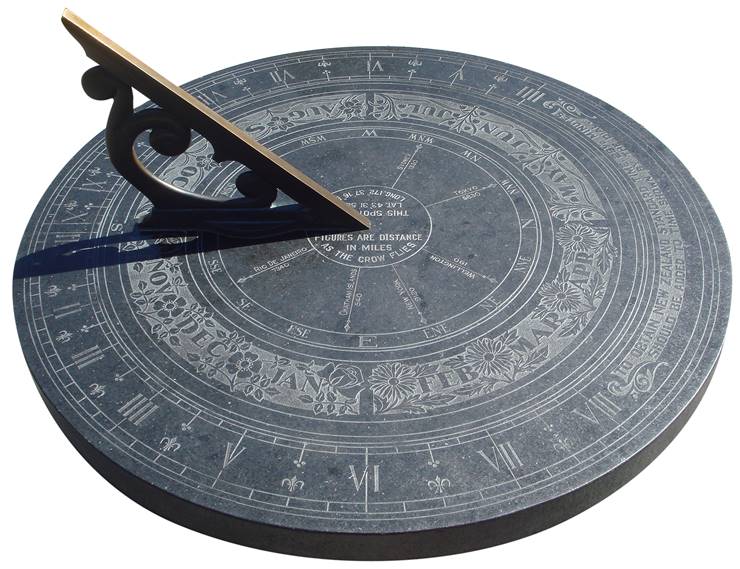Sundial Histrory - First Time Keeping Device
History of time measuring devices spans not only modern periods of our history when mechanical engineers enabled us to infuse clocks and watches into our culture, but also goes much further back in time – all the way back to the birth of modern civilization. There in Babylon and Ancient Egypt, scientists and astronomers first came to conclusion that movement of celestial bodies can be used to precisely measure time. Their initiative and ingenuity brought us first time measuring devices – sundials.
Even though modern historians and archeologist cannot pinpoint the exact time first sundials were used, remains of Egyptian and Babylonian can provide us with clear proof of their existence. Massive Egyptian sundial obelisks were erected from the North African sand in 3500 BC, which proves that smaller sundials were used even bore that distant age. Historical records from first two millennia BC can even give us picture of Egyptian view of the time. Because they lived in the desert environment with small daytime variations in yearly seasons, they split their daytime into 10 equal hours, with 4 additional hours that were split into hours of sunrise and sunset.

As the centuries went on, rise of Ancient Greece enabled their traders to get their hands on Babylonian sundials which were promptly returned to Greece and embraced immediately by their innovative scientists and mathematicians. Modern historians believe that sundials came into Greece by the way of Anaximander of Miletus, famous philosopher, astronomer and physicist. After he showcased basic principles of sundial to his students in Milesian school, sundials became one of the driving forces of the famous Greek calculus and creation of modern geometry which focused much on sundial’s conic sections. With such great natural mystery on their hands and obvious benefits of having precise time measuring device in their lives, many Greek innovators started focusing their careers on sundials and other types of time keeping devices (water clocks, weight clocks, candle clocks, lamp clocks, etc.). The most famous example of sundial innovation came from mathematician and astronomer Theodosius of Bithynia (160 BC - 100 BC) who claimed to have invented universal sundial that can be used anywhere in the world.
Sundial advances that were made in Greece quickly traveled to Rome, who made their first sundial in Rome in 293BC. In 10BC Emperor Augustus erected largest Roman sundial Solarium Augusti (30 meter high) that was imported from Egypt. After the fall of the Roman Empire, Islamic Caliphate inherited and improved Greek dials which then gained many new abilities. Because of the larger seasonal differences, Islamic mathematicians developed sundials with temporary hours – hours were shorter in winter and longer in summer. By late 1300s Islamic mathematicians adopted equal hours of the day for the entire year, a design that appeared in Europe in mid 1400s.
European renaissance brought the sundials into popularity, where they remained in constant use mostly by government and commerce until the mid-1800s when manufacturing of mechanical clocks finally surpassed accuracy and reliability of sundials.
